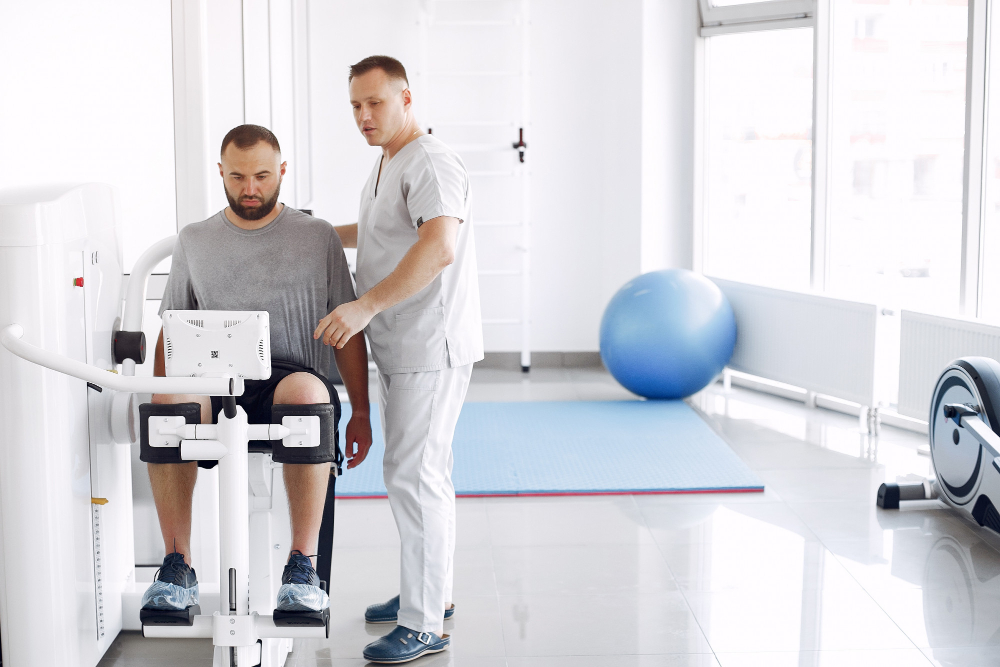How Physical Therapy Transforms Recovery and Prevention

Physical therapy stands as one of the most effective, non-invasive approaches to healing and maintaining optimal body function. Whether you're recovering from surgery, managing chronic pain, or looking to prevent future injuries, this evidence-based practice offers solutions that can dramatically improve your quality of life.
Many people only consider physical therapy after an injury occurs, but this therapeutic approach serves a dual purpose: accelerating recovery from existing conditions while strengthening the body to prevent future problems. Understanding how physical therapy works can help you make informed decisions about your health and wellness journey.
If you're seeking professional care, physical therapy in Winter Springs, FL provides access to skilled practitioners who can create personalized treatment plans tailored to your specific needs and goals.
The Science Behind Physical Therapy Recovery
Physical therapy accelerates healing through targeted exercises, manual techniques, and specialized equipment designed to restore function and reduce pain. The recovery process involves several key mechanisms that work together to promote healing.
Restoring Range of Motion
When injuries occur, muscles, joints, and surrounding tissues often become stiff and restricted. Physical therapists use specific stretching techniques and mobilization exercises to gradually restore normal movement patterns. This process prevents scar tissue from forming in ways that could limit long-term mobility.
Reducing Inflammation and Pain
Therapeutic modalities like ultrasound, electrical stimulation, and cold therapy help reduce inflammation at the cellular level. These treatments increase blood flow to injured areas, promoting the delivery of nutrients and oxygen while removing waste products that can slow healing.
Strengthening Supporting Muscles
Recovery isn't just about healing the injured area—it's about strengthening the entire kinetic chain. Physical therapists identify muscle imbalances and weakness patterns that may have contributed to the original injury, then develop targeted strengthening programs to address these issues.
Prevention: Your Best Defense Against Future Injuries
Physical therapy's preventive benefits often surpass its recovery applications. By addressing potential problems before they become painful or debilitating, you can maintain an active lifestyle and avoid costly medical interventions.
Movement Pattern Assessment
Physical therapists analyze how you move during daily activities and sports. Poor movement patterns place excessive stress on certain joints and muscles, creating vulnerability to injury. Through careful assessment, therapists can identify these patterns and teach you more efficient ways to move.
Postural Correction
Modern lifestyles often create postural imbalances that lead to chronic pain and injury. Extended sitting, repetitive motions, and poor ergonomics can cause muscle imbalances that affect your entire body. Physical therapy addresses these imbalances through targeted exercises and education about proper body mechanics.
Sport-Specific Training
Athletes benefit tremendously from preventive physical therapy programs. These specialized programs focus on the demands of specific sports, strengthening muscles and movement patterns that are crucial for performance while reducing injury risk.
Conditions That Benefit from Physical Therapy
Physical therapy effectively treats a wide range of conditions, from acute injuries to chronic conditions that have persisted for years.
Musculoskeletal Injuries
Back pain, neck pain, and joint problems respond exceptionally well to physical therapy interventions. Whether caused by acute injury or gradual wear and tear, these conditions often improve significantly with proper treatment and exercise.
Post-Surgical Recovery
After orthopedic surgery, physical therapy plays a crucial role in restoring function and preventing complications. Structured rehabilitation programs help patients regain strength, mobility, and confidence in their movements.
Chronic Pain Management
For individuals dealing with persistent pain conditions, physical therapy offers drug-free alternatives that address root causes rather than just masking symptoms. Through education, exercise, and hands-on techniques, patients learn to manage their pain more effectively.
Neurological Conditions
Stroke recovery, Parkinson's disease management, and other neurological conditions benefit from specialized physical therapy approaches that help retrain the nervous system and maintain functional independence.
The Physical Therapy Process
Understanding what to expect during physical therapy can help you approach treatment with confidence and realistic expectations.
Initial Evaluation
Your first visit involves a comprehensive assessment of your condition, movement patterns, strength, and functional limitations. This evaluation forms the foundation of your personalized treatment plan.
Goal Setting
Working with your therapist, you'll establish specific, measurable goals for your treatment. These might include pain reduction, improved mobility, return to specific activities, or prevention of future injuries.
Treatment Implementation
Your treatment plan will likely include a combination of hands-on techniques, therapeutic exercises, patient education, and home exercise programs. The specific interventions will depend on your condition and goals.
Progress Monitoring
Regular reassessments ensure your treatment remains effective and appropriate. Your therapist will modify your program as you improve, continuously challenging you while respecting your body's healing timeline.
Maximizing Your Physical Therapy Results
Active participation in your treatment significantly impacts your outcomes. Here are strategies to get the most from your physical therapy experience.
Consistency is Key
Following your exercise program consistently, both in the clinic and at home, accelerates your progress. Skipping sessions or neglecting home exercises can slow your recovery and limit your results.
Open Communication
Share your concerns, pain levels, and progress with your therapist. This information helps them adjust your treatment and ensure you're progressing safely toward your goals.
Lifestyle Integration
The most successful patients integrate therapeutic principles into their daily lives. This might mean improving workplace ergonomics, modifying exercise routines, or adopting better movement habits.
Take the Next Step Toward Better Health
Physical therapy offers a proven path to recovery and injury prevention that can transform your relationship with pain and movement. Rather than accepting limitations or relying solely on medication, you can take an active role in your healing and long-term wellness.
The journey to better health starts with a single step. By working with qualified professionals who understand your unique needs and goals, you can develop the strength, mobility, and confidence to live life to its fullest potential.
If you need professional physical therapy in Winter Springs, FL, contact B Physical Therapy today to schedule an appointment. Their experienced team can help you recover from current injuries while building the foundation for a healthier, more active future.